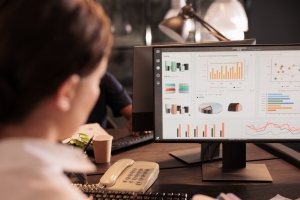Thermoforming offers designers flexibility and cost-effectiveness
Thermoforming is a versatile plastic forming process that provides product designers with significant flexibility and cost savings. By using heat and pressure, thermoforming can convert flat plastic sheets into intricate three-dimensional shapes that would be difficult or impossible to manufacture through other plastic fabrication techniques. The ability to precisely sculpt plastic parts makes thermoforming well-suited for a wide variety of applications across many industries.
Thermoformed Plastic Workings
In the thermoforming process, a plastic sheet is first heated to a soft, pliable state. Common heating methods include contact heating, infrared heating, or hot air ovens. Once sufficiently softened, the plastic sheet is then vacuum formed or pressure formed over a mold or product die using matched-die tooling. Vacuum forming involves drawing the softened sheet over the die through differential air pressure, while pressure forming pushes the plastic against the tooling using mechanical force. In both cases, the heat-softened plastic conforms to the exact contours and details of the mold surface.
After forming, the newly shaped part is quickly cooled below its glass transition temperature to set the dimensions. Trim and finishing operations then cut away excess plastic flash and refine seam lines and surface finish. The end result is a high-accuracy net-shape plastic component that closely mimics the tooling surface with intricate three-dimensional features.
Common Thermoformed Plastic Materials
Thermoforming is very adaptable to a wide selection of plastic resins. Some of the most commonly thermoformed plastics include:
- Polystyrene (PS) - A cost-effective material that is easily fabricated and finishes well. Used extensively for foodservice and medical device packaging.
- Polyethylene terephthalate (PET) - Provides strength and clarity ideal for barrier packaging of foods and liquids. Common grades include PETG and CPET.
- Polypropylene (PP) - Economical with good heat and chemical resistance for industrial and consumer goods packaging.
- Polyvinyl chloride (PVC) - Durable with a matte or glossy surface texture suitable for medical, construction, and automotive components.
- Acrylonitrile butadiene styrene (ABS) - Impact-resistant plastic offering durability and dimensional stability for housings, enclosures, and protective covers.
Cost Savings through Efficiency and Scalability
One of the primary advantages of thermoforming is its ability to produce large volumes of plastic parts efficiently at low cost. Large sheet rolls allow economical production of thousands of thermoformed components through continuous, rapid processing. Single hit or gang tooling can simultaneously form multiple parts from a single sheet to maximize throughput. Automated setups further streamline material handling and component transfer.
The thermoforming cycle is typically 10 to 30 seconds—significantly faster than rotational molding, compression molding or other fabrication methods. Faster cycle times enable higher productivity and part-per-hour outputs. In addition, tooling and capital equipment costs for thermoforming are relatively modest compared to costly injection molding dies. These factors make thermoforming very scalable from low to high production volumes in a cost-effective manner.
Design versatility through complex geometries
Perhaps the most compelling advantage of thermoforming lies in its ability to produce complex three-dimensional geometries that would be impractical with other plastic fabrication techniques. Under the application of vacuum pressure, thermoforming plastic sheets can form intricate curves, protrusions, ridges, and hollow features matching precisely to the tooling surface.
This design freedom allows everything from simple packaging trays to advanced medical devices, automotive interior components, and protective housings and enclosures. Deep draws can produce multilayer components with built-in stiffening or sealing elements. Living hinges, snap fits, and other features can be readily integrated into the part design as well. Thermoforming is a remarkably versatile process for converting two-dimensional substrates into sophisticated net-shape plastic shapes.
In summary, thermoforming provides designers and manufacturers a flexible, economical solution for producing intricate three-dimensional plastic components in volume production. The ability to precisely transform sheets into complex geometric forms continues to drive innovation and new applications across a wide spectrum of industries. As an adaptable process compatible with numerous plastic resins, thermoforming serves as a mainstay fabrication technology essential to modern product design and manufacturing.






